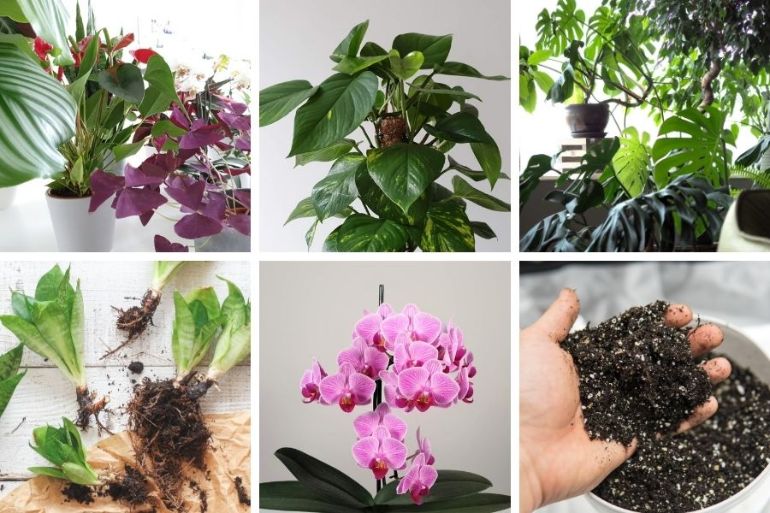The appealing images of beautiful houseplants on social media are helping to spark interest and attract newcomers. Growing houseplants is fun, healthy, educational, and rewarding – and you can join anytime, even if you’ve never watered a houseplant. This article is a beginner’s guide to growing plants indoors – it can’t take you from novice to green thumb in one step, but it can set you on the journey.
To get started with houseplants, pick plants suited to the conditions in your home and learn the basics of their care. Choose healthy houseplants and provide the light, water, warmth, and humidity they need. Note that overwatering is the most common cause of plant loss.
Preparation
Gardening is a study in preparation. Whether it’s tilling the soil or making a compost pile, preparing for the coming season is part of the ancient craft of growing plants.
So, before spending money, first understand the basics of houseplant care. Then you can evaluate your space and determine which plants will grow best there.
Houseplants 101: The Basics
Plants mostly don’t mind where they grow: they thrive if conditions are right. Of course, the “right” conditions vary from plant to plant.
Lighting For Houseplants
Sunlight that is too intense will scorch plants, but plants can’t live in near darkness: they need light for energy-generating photosynthesis. A bright window is prime houseplant real estate.
Note that ambient illumination inside our homes is much dimmer than sunlight outdoors. Even the light from a sunny window diminishes quickly over a short distance inside.
Your window’s exposure is important. In the northern hemisphere, windows facing south receive the most direct sun – north-facing windows receive the least. Many tender tropicals appreciate morning or late hours of gentle direct sunlight in an east- or west-facing window.
Plants can survive in less light than they need for optimal growth, but they typically become leggy, with skimpy, weak stems, as they “stretch” to find brighter conditions. If your home is too dark, consider adding grow lights.
Read my article about understanding light requirements for houseplants to get completely up to speed about this crucial aspect of houseplant care.
Note: Even low light plants need conditions that are bright enough to comfortably read in.
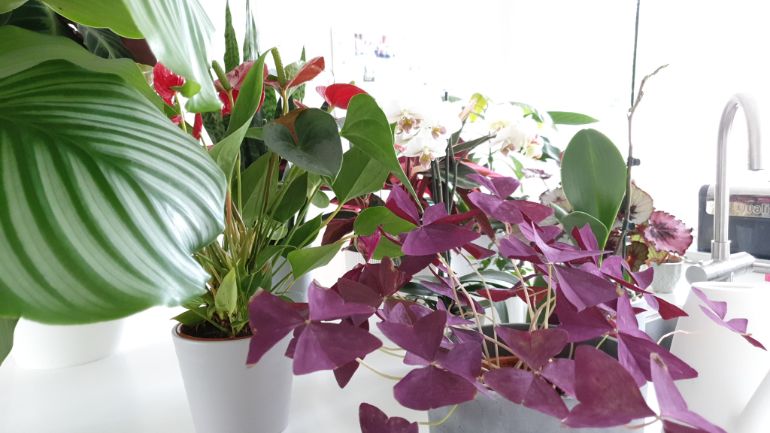
Watering Houseplants
Water is not only a primary element of houseplant care, it’s also fraught with hidden danger (for the plant). Root rot from overwatering is the most common killer of houseplants. Soggy soil breeds decay pathogens and reduces the amount of oxygen available to roots.
Each plant has its own watering preferences: it’s critical to know the needs of your particular species.
Points to remember:
- Don’t water on a schedule; instead, monitor the soil and only water at the appropriate time. Use a chopstick or other wooden probe to check if it’s dry … or simply stick your finger into the soil.
- Once the soil has dried appropriately for the plant, thoroughly inundate the medium so excess water flows out the drainage holes. This ensures the entire root ball is moistened and flushes the soil of unused fertilizers, pesticides, or other potentially toxic chemicals.
- Let the pot drain completely after watering and empty any cache reservoirs.
- The classic early symptom of a plant in trouble from overwatering is yellow leaves (though yellowing can be caused by other issues, too.)
- Plants use less water in cool temperatures or during winter dormancy. It’s important to reduce watering during these times.
Watering is one of the most crucial aspects of houseplant care, and one of the quickest ways to kill a houseplant if done incorrectly. Learn more about how and when to water your houseplants to make sure you get it right.
Houseplant Soil
Correct watering is greatly affected by soil composition. Heavier soils hold water and make it difficult to maintain the desired moisture level. Almost all plants like a well-draining mix.
Amendments like coarse sand and perlite add structure to keep the soil airy and light. “Soilless” mixes made of sources like peat moss and coconut coir are increasingly popular for use with tropical plants.
I can teach you everything you need to know about houseplant soil in about 5 minutes. Read my article on making and buying houseplants soils to get fully up to speed.
Maintain Suitable Temperatures
Most popular houseplants do well at normal household temperatures – of course, research your particular species.
Don’t let a plant sit in a draft! Remember that a plant near a window can be subject to overheating or cooling if outside temperatures are extreme.
Humidity
A level of 40-60% is suitable for many houseplants, but some specimens prefer even higher levels. Our homes are often arid: proper conditions for succulents but not tropical plants.
Houseplants suitable for beginners are typically tolerant of lower humidity – but rest assured most would appreciate more humidity.
If you live in a humid climate, this may not be a concern. However, air conditioning and heating suck moisture from the air; a plant coping on the margins of low humidity in summer can suffer in wintertime.
An inexpensive hygrometer allows you monitor your levels. There are a few basic ways to modestly raise humidity:
- Grouping plants together. This lets them share in each other’s transpiration. Don’t crowd them; it’s best if the leaves don’t touch.
- Placing pebble-filled water trays or other receptacles nearby or underneath the plant’s container helps boost its local humidity through evaporation.
- Locations like a (well-lit) bathroom, laundry room, or kitchen generally have healthy periods of higher humidity.
- A room humidifier is the ultimate solution, but the outlay and maintenance are significant. It’s not really the best recommendation for a beginner. It’s better to gain experience with plants that tolerate your home’s normal humidity.
Unless your plant loves arid conditions, it will probably get a positive lift from higher humidity. It’s a sovereign treatment for a lackluster plant. You can read more about the best ways to improve humidity for houseplants in this article.
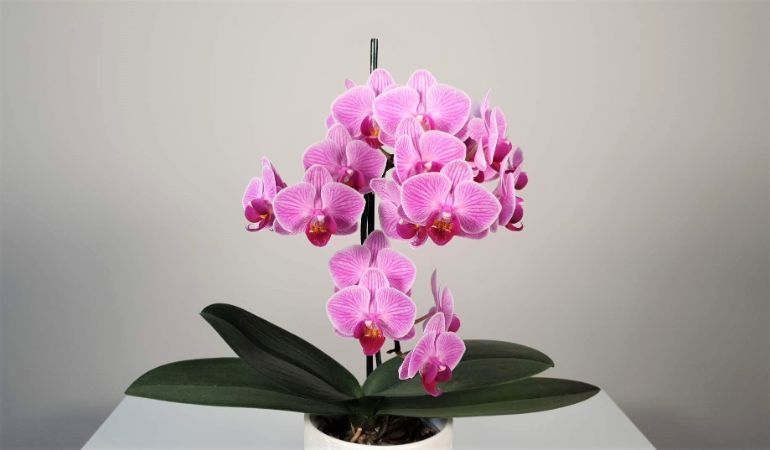
Checklist: Evaluating Your Space
Before acquiring a houseplant, check out the conditions you have to offer. There isn’t a right or wrong answer! You just need to know.
- Light: How much light do you have? How much window space is available … and of which exposure(s)?
- What is the humidity level?
- Temperature
- What is the range?
- What are the likely seasonal changes?
- Are there potential drafts or temperature extremes?
- Will your plant(s) live in a prominent area so it’s not forgotten?
- Is your intended location out of traffic, or is the plant subject to being brushed or bumped often?
- Is the proposed location convenient for watering and maintenance?
Once you know the conditions you have in your home, you can pick houseplants that naturally like these conditions. It is so much easier to keep houseplants healthy when they like the natural conditons in your home. You can always branch out to more challenging plants once you gain confidence and experience.
Best Beginner Houseplants
Here are tried-and-true superstars that have given countless novice gardeners experience and confidence. You can’t go wrong here:
ZZ Plant – Possibly the most durable houseplant next to a fake one, this glossy evergreen can handle a range of conditions and stay looking great. The only downside for a beginner is that the plant is so easy it may not challenge you – but it’s a great choice if you’re timid or battle-weary and need a boost of horticultural confidence.
Peace Lily – This lovely moisture-loving plant can survive an overactive watering can better than most. It begins to wilt as the soil dries and finally collapses if you don’t get the message. If it isn’t damaged by a long drought, the plant springs back to life once watered … it’s like a friendly teacher that gives hints and extra chances. Take a look at my guide to growing Peace Lilies for further info.
Snake Plant – This exotic succulent has helped raise generations of gardeners: It is the king of set-and-forget plants. There are many fascinating varieties, too. Snake Plants are easy to propagate and stunning when planted in masses.
Cacti – A classic beginner’s plant! There are hundreds of wonderful cacti and other succulents, and most are easy to keep once you get the knack. Probably the hardest thing about cacti for beginners is not to fuss over them, as most appreciate “benign neglect.”
Aloe – This rewarding succulent bears particular mention because it has medicinal properties that add a dimension to the plant-keeping experience. They need fast-draining soil and high light. This long-lived plant can remain part of your family for generations.
Pothos and Heartleaf Philodendron – These friendly vines look similar and are often confused with each other, but both are veteran beginner’s plants whose good looks and hardy good nature have made them ubiquitous. The variegated Brasil is especially beautiful.
Peperomia – Though not so well known (yet) as others, these pretty little desktop gems come in a host of varieties. Different species tend to have similar care needs but differing levels of tolerance. The Watermelon Peperomia is especially undemanding. Read more about caring for Peperomia houseplants here.
This is only a small selection of easy-going plants that can cope with newbie mistakes.
Pro Tip: If you aspire to grow a difficult plant, consider first trying one of the easier (and usually cheaper) members of its family.
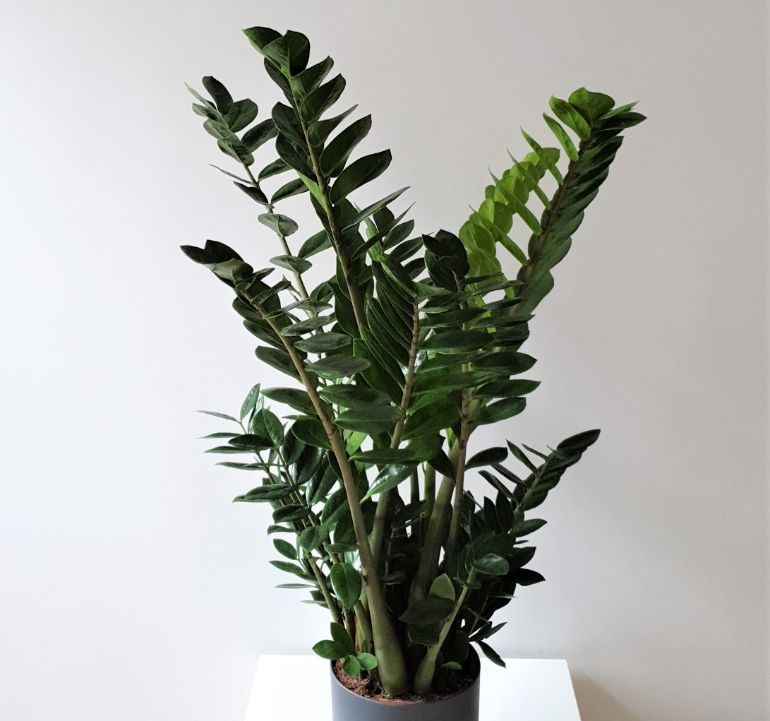
Bringing Houseplants Home
After you’ve decided on your new plant’s future location and evaluated its growing conditions, make a shortlist of suitable plants. Availability is always an issue, but most of my suggested plants are probably available at your local garden center – or even the nearest grocery store.
Purchasing healthy plants saves grief. Here’s what to look for:
- The leaves should be normally colored and undamaged; not pale, yellowed, dried, or frayed.
- Steer away from plants with yellowing or browning foliage.
- Avoid leggy plants with weak stems; choose a full, sturdy plant.
- Exclude plants showing signs of overly damp conditions such as white mold or mildew on the soil or leaves.
- Inspect the plant for insects; carefully examine the plant’s joints and under the leaves.
Ask store personnel for help if you’re unsure!
Ordering Online
Purchasing plants over the internet has become popular. There are many excellent sellers online, and houseplants generally ship surprisingly well. My favorite place to buy houseplants online is Etsy.
Your new plant will arrive boxed and a bit put out after its bumpy trip in the dark. They need quiet time in favorable conditions: don’t fuss, fondle, repot or fertilize them. Just put your new green baby in its new location, water if the soil is dry … and let it recover.
Allow Time For Acclimation
It is perfectly normal for a plant to pause growth and possibly lose leaves when first brought home. Don’t move it around, just let it acclimate.
Many growers are tempted to immediately repot into ostensibly better soil when they get a new plant, but this is usually a mistake. Repotting is invasive from the plant’s point of view and will normally do more harm than good until the plant has established itself in your home.
As a general rule, don’t repot for at least two months after a major move. It’s best to wait until spring or early summer.
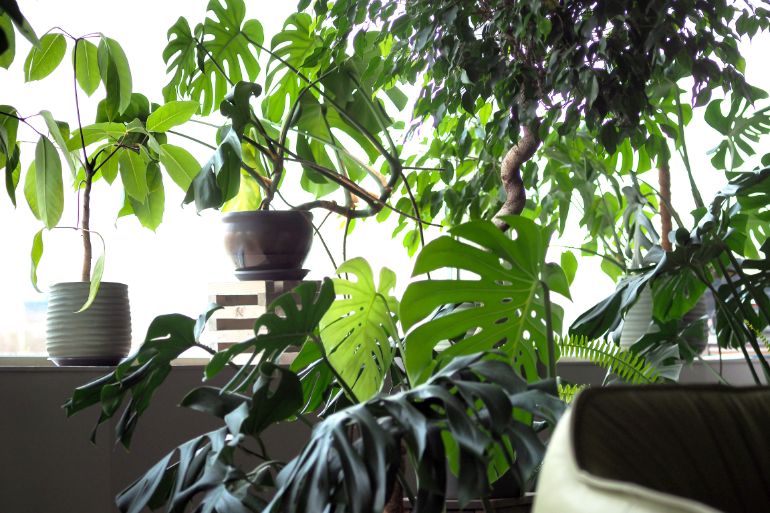
Houseplant Maintenance
If you’ve picked your spot well and water according to the plant’s specification, the weeks ahead should be smooth sailing. Observe and have fun.
Patience Is A Gardening Virtue
Whenever it’s ready, your new plant will start to grow again. It may be a bud on a leaf node or a tiny leaf spear.
The beginner plants we’ve mentioned will acclimate quickly enough that you may not notice. Some plants take longer – much longer to become comfortable in their new surroundings.
Once your new plant is comfortable and growing, some light maintenance chores will present themselves. Now is the time to designate a special place for your gardening equipment. You can get by for a little while by stashing a bottle of fertilizer under the sink … but they didn’t invent tool sheds for nothing.
Flush The Soil When Watering
The best way to water most plants is to soak the pot thoroughly. Flushing water through the soil rinses it of residue fertilizers and other potential toxins. It also ensures the whole root system is hydrated.
Well-draining soil is a necessity for this practice, of course; otherwise your treasured responsibility risks sitting in a puddle of mud and dying of root rot.
Note: Peat or sphagnum moss are resistant to water when dry, so the soil may need extra soaking to ensure rehydration.
If your plant’s pot is on a saucer or other cache, be sure to empty it after the soil has drained thoroughly.
Grooming And Pruning
Grooming is basic plant maintenance: it involves pruning away dead, damaged, or unsightly plant material. This not only makes the plant look better, it eliminates havens for pests and pathogens.
Tug a yellowed leaf lightly to see if it falls away, but otherwise cut it cleanly. To avoid introducing microbes into the wound, always sterilize your cutting tools with a wipe of isopropyl (rubbing) alcohol or other method.
With some plants, pruning stimulates branching and a more compact profile, but not all plants respond this way. Do your homework on your specific species.
Pro Tip: Brown areas on foliage can be trimmed for aesthetics, but stay within the brown margin to avoid injuring the living leaf.
Houseplant Fertilization
When it comes to fertilizing your plants, less is more. An excess can burn their sensitive feeder roots and lead to discolored foliage and stymied growth.
Since plants literally make most of their “food” from light, they don’t need a lot of extra nutrients in their soil. Check your plant’s preferences and follow them, but with a light hand.
Here are tips to help you fertilize correctly:
- Dilute the formula to half or even a fourth of the label’s recommendation.
- Only fertilize during the warm season when the plant is growing.
- If you’re using a dry blend, dissolve it in water first. It’s easier to measure and evenly apply fertilizer if it’s in liquid form.
- Many nurseries add a slow-release fertilizer that looks like colored beads in the plant’s soil. These pellets will take time to fully release, so be cautious with fertilization until they dissipate.
- Read my guide to fertilizing houseplants to learn everything you need to know.
Repotting
A well-intended change into a new pot with fresh soil is actually traumatic for plants. Even careful repotting risks tearing delicate roots.
Pruning is actually much less stressful for the plant. Yes, having limbs cut off is easier for them than moving to fresh quarters – an example of why raising plants is not intuitive!
Luckily, it’s not usually necessary to repot frequently. Some plants grow happily for years in their original nursery pot.
- Plants especially sensitive to disturbance should only be repotted when necessary. Once the plant’s roots have largely replaced the soil it’s time to repot: signs include increased watering frequency, roots extruding from drainage holes and pushing the plant out of the pot, or lackluster or stunted growth.
- It’s best to repot in the spring or early summer to give the plant growing time to recover.
- If the plant has outgrown its container, replant into one that is no larger than a single size up (one to two inches in diameter).
- It’s very important that the new container has drainage holes in the bottom! Pebbles at the bottom of a sealed pot don’t work.
- The material of the plant’s container makes a difference in how quickly the soil dries out. Terra cotta pots dry out faster and let the roots breathe. Plastic containers conserve soil moisture.
- Read my step-by-step guide to repotting rootbound houseplants to make sure your plant sails through the process.
Pests And Disease
Every plant has a different level of resistance to pests, but they all get attacked by the same common critters. Common invaders include aphids, scale, spider mites, thrips, and whitefly.
The best pest preventative is to keep your plant healthy and inspect it regularly. A good habit is to check for pests each time you water. Look for telltale signs like discolored or deformed leaves. Aphids and other sucking insects excrete sticky “honeydew” that can attract ants: it appears like shiny or sooty areas on the lower leaves. Spider mites leave tiny webs.
Note: Some pests are very small and hard to detect; a magnifying glass is a helpful (and fun) way to identify pests.
If you find trouble, identify the specific pest and treat in the gentlest effective manner possible: remember, these are houseplants. Poisoning your living space isn’t necessary; organic methods are safest.
Neem or light horticultural oil, insecticidal soap, diluted alcohol spray, and diatomaceous earth (DE) are primary examples of mild treatments.
Here are important tips to remember:
- Catching an infestation early makes it much easier to deal with. Waiting until the problem is well advanced can weaken the plant and make eradication difficult.
- Treatment typically requires repetition every four to six days until the infestation is cleared.
- Isolate the plant immediately if you find an infestation. Pests can quickly jump to other plants.
- Safely discard badly affected leaves to limit the infestation. Don’t compost them!
- This article covers identifying, treating, and preventing houseplants pests in further detail.
A Weekly Shower
Okay, a regular shower to knock dirt and pests off a houseplant isn’t strictly necessary, though many experienced growers consider it part of their routine. Not only does it make the plant shine, it cleans the grime from their leaves to let them breathe and helps reduce pests – especially spider mites, which prefer dry conditions.
The basic technique is to bring the plant into a sink or bath and give the leaves a good washing. Wait until the plant needs to be watered – you don’t want to rewet soil that’s already moist!
Pro Tip: If necessary, you can wrap the pot to keep the soil from being further soaked.
If the container is too large for the sink or bathtub, move the plant outside to hose it down.
Your Green Future
If you’ve enjoyed the experience to this point, it’s natural to want to expand. There are so many fascinating and beautiful houseplants to explore … here are some adventures ahead:
Houseplant Propagation
One of the most rewarding and fascinating – and fun – aspects of growing houseplants is making more!
Houseplants can be propagated through sexual reproduction (ie, pollinated seeds) or by asexual means like planting offsets, leaf or stem cuttings, air layering, and root division. Not every plant can reproduce easily by every means, so find out what works for your plant first.
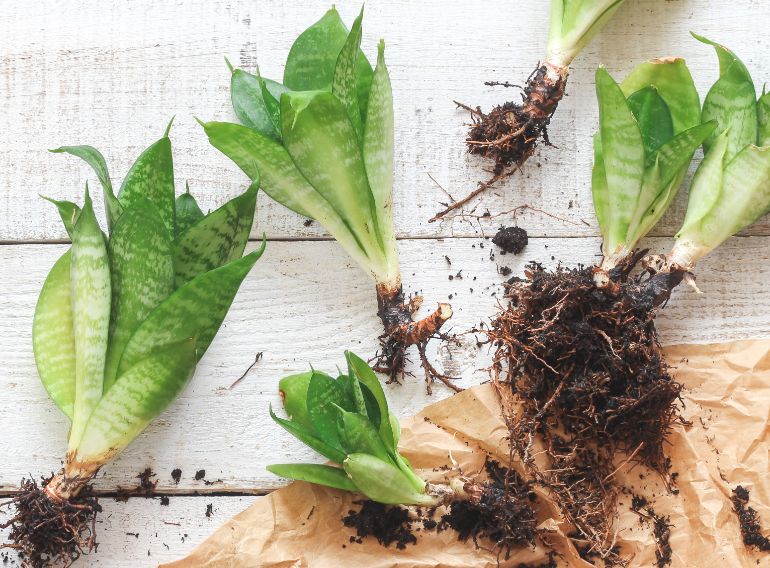
Houseplant Collections
Forming a collection of a favorite and well-populated genus like Philodendron or Hoya is another great plant pastime. It lets you gain special expertise and lends an informal structure to your adventures in botany.
Some growers base their collection on other attributes, too. Maybe you like ferns or bog plants; maybe succulents turn you on. Some growers collect plants with highly textured leaves or a special growth habit … or maybe flowers of a certain color. No one can tell you it’s wrong.
Facilities And Equipment
As you gain experience and, well, branch out into new directions, you will find there is a world of indoor gardening paraphernalia to invest in. Basic examples are pots, soil and amendments, cutting tools, pest treatments, and fertilizers.
You can always add grow lights, and – if you’re well smitten – humidifiers and propagation equipment. Maybe a greenhouse is in your future. Most items are not required … but it’s all up to you. Welcome to the worldwide houseplant community and … Happy Gardening!
Other Articles You Might Find Helpful
If you’d like to learn more about growing houseplants, or need some inspiration for what houseplants to get next, the articles listed below should help a lot.
Houseplant Care
- Understanding Light Requirements for Houseplants
- How To Know When To Water Houseplants
- Guide to Making And Buying Houseplant Soil
- Ways To Increase Humidity For Houseplants
- How To Fertilize Houseplants – A Complete Guide
- How To Identify, Treat And Prevent Common Houseplant Pests
- How To Identify, Treat And Prevent Common Houseplant Diseases
- Why Do Houseplants Get Yellow Leaves? (And How To Fix Them)
- Why Is My Houseplant Wilting?
- Check Out My Book, “Houseplants Made Easy”
Houseplant Ideas
- 21 Houseplants For North Facing Windows
- 25 Hard To Kill Houseplants
- 14 Perfect Houseplants For East Facing Windows
- 11 Houseplants For Hot Rooms
- 15 Easy To Propagate Houseplants
- 28 Houseplants That Love Direct Sunlight
- 19 Beautiful Flowering Houseplants That Look Stunning
- 12 Stunning Calathea Varieties
- 50 Beautiful Types Of Philodendron Houseplant
- 50 Types Of Hoya Houseplant
- 42 Anthurium Varieties You Will Love
- 23 Types Of Aglaonema (Chinese Evergreen)
- 13 Types Of Alocasia Houseplants

